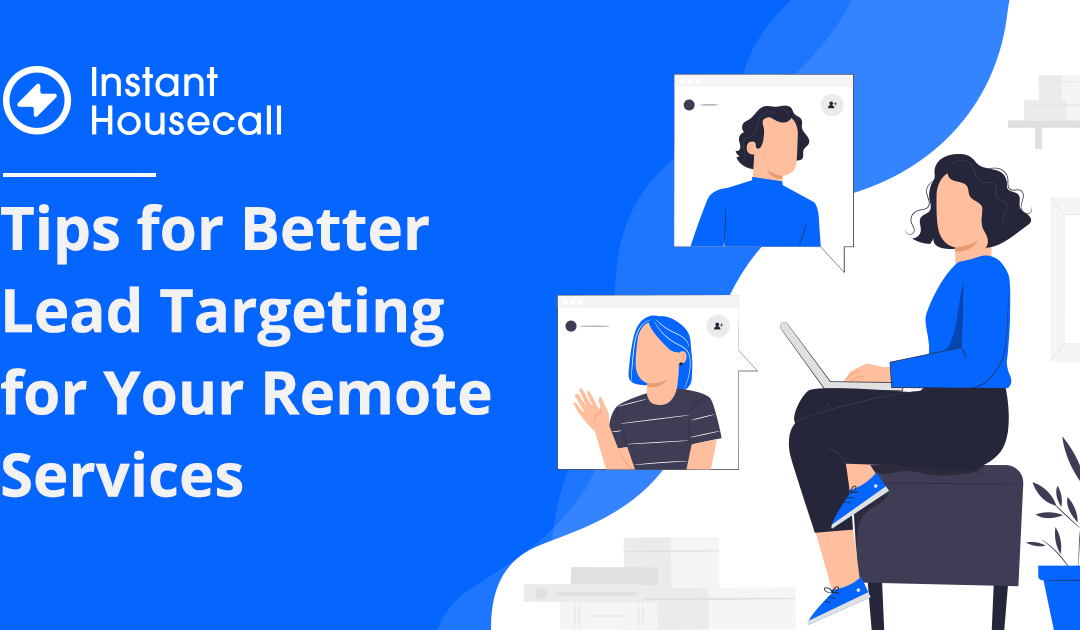
Tips for Better Lead Targeting for Your Remote Support Services
Do you ever feel like you’re spending time and money on lead generation, but you’re not getting the leads that are converting? Getting poor leads or ones that don’t truly need what you’re offering can frustrate any IT business owner and cause them to rethink their marketing spend.
If you’re getting leads for your remote support business, but those leads aren’t buying, then you could be missing the mark on your lead targeting. In essence, you’re casting too wide a net to bring in every type of lead there is. This results in you spending time and money responding to incoming leads, only to find out they really aren’t all that interested and not in need of what you’re offering.
Honing your lead targeting can help you reduce your number of “junk leads” and improve your conversion rate for a lead to a sale. Another benefit is a savings of both time and money because your team will be spending more of their inquiry follow-up time with people that are actually interested and can use what you’re selling.
Here are some of the questions to ask that can help you fine-tune the way you market so you can reach more qualified leads.
Do You Know Your Target Audiences?
You can’t target the right people or industries if you haven’t defined your target audiences for your remote support services.
If you’re a bit fuzzy on your exact target audiences or just think of them in general terms, such as, “Any business that wants to use our remote services,” then you haven’t narrowed down your audiences enough.
Think about things such as:
- Main industries that would need remote support
- B2B, B2C, or both?
- Customer size
- Geographic location
- Demographics (companies with remote employees, schools doing remote teaching, etc.)
A good way to get started identifying your target audiences is to look at your client list. Break down your current customers into those specifics listed above.
Once you know your target audiences, you can begin honing your marketing for them and more easily identify a hot lead from one of those audiences when it comes in.
Is The Size of the Customer Right?
Because remote support is less costly to provide than in-person IT support, you may have a wide range for the size of customers that you are targeting. However, it’s still a good idea to think about this, because if you are advertising on any social media platforms, they will have target demographics on income and company size that you can use to find the right audience.
Do They Prioritize IT?
If a lead doesn’t prioritize IT or see the value in spending much money on it, then they may be a lower priority lead or require a different message than leads that do understand how important it is to have well-optimized technology.
You can determine this through introductory questions, such as:
- “Have you ever used managed IT services?”
- “When is the last time you contacted an IT provider”
- “Do you have an IT budget, or do you just spend money on technology as needed?”
Do They Have an In-House IT Team?
If a company already has an in-house IT team, that doesn’t necessarily mean that they aren’t a good target customer, it just means that they may not need your services quite as much.
Knowing whether or not a company already has an in-house IT team or person is important because you will want to deliver a completely different remote support sales pitch to companies that have someone onsite that’s already in charge of their IT. Such as promoting your services as a way to tap into expanded expertise.
Are You Focused on the Right Marketing Mediums?
Content marketing has been found to generate three times as many leads as outbound marketing, plus cost 62% less.
If your lead generation isn’t bringing you enough qualified leads, it could be due to not using enough “pull marketing.” Content marketing is a form of pull marketing, where you are putting out helpful content for people to find on their own to be drawn to your website where they will hopefully convert to a lead.
If you are doing mainly traditional marketing, which is more advertising-focused, then you may want to add some content marketing into the mix.
Are Your Systems Set Up to Identify Your Audiences?
Do you have a way of identifying leads from your target audiences when they call or fill out an online form? Doing this upfront can help you tailor the remote support message that you provide to them.
For example, if a lead is in the accounting or banking industry, you might want to highlight the security and compliance features of your remote support software. For a small business owner, you may want to focus on how cost-effective this type of IT support can be.
Use options in a lead form and simple questions, such as, “What industry do you work in?” to identify audiences as soon as they contact you so you can nurture those leads appropriately.
Use a Remote Software That Gives You Plenty to Brag About
Instant Housecall remote support software has multiple features that include encryption, time windows, and more, that you can use when marketing to different target audiences.
Try Instant Housecall risk-free for 15 days and experience it for yourself! Try it out now.
Recent Comments